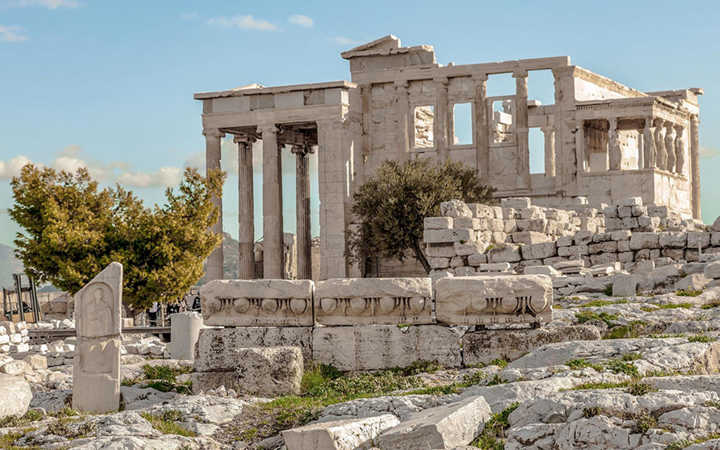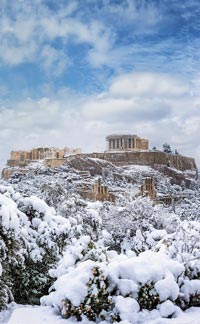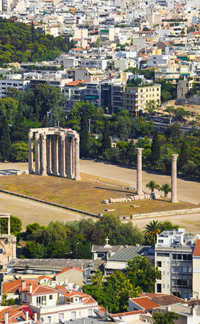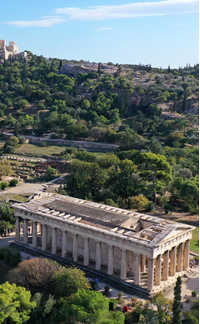Nestled on the northern side of the Acropolis, the Erechtheion is a striking temple that stands apart from the Parthenon’s symmetry and grandeur. Built between 421 and 406 BCE during the later stages of the Peloponnesian War, this highly unusual structure is one of the most sacred spots in ancient Athens, tied closely to both legend and religion. It was not dedicated to a single deity, but rather to several powerful figures in Athenian mythology, including Athena, Poseidon, and the legendary king Erechtheus.
Architecture that Breaks the Rules
The temple’s irregular design reflects its sacred function and uneven terrain — a rare example in Greek architecture. It contains multiple levels and chambers to accommodate the shrines of different deities. Its unusual layout is a physical representation of how form followed faith.
The Porch of the Caryatids
The most famous part of the Erechtheion is the Porch of the Caryatids, where six beautifully sculpted female figures serve as columns. These statues are not only structurally impressive but also artistically refined, with flowing drapery and serene expressions. The ones seen on-site today are replicas; five originals are housed in the Acropolis Museum, while the sixth is in the British Museum.
Site of Divine Competition
The Erechtheion is closely linked to the mythological contest between Athena and Poseidon over who would become the patron of Athens. According to legend, Poseidon struck the ground with his trident, creating a saltwater spring, while Athena offered an olive tree. The olive tree, considered more valuable, won her the city. A modern olive tree still grows beside the temple as a living symbol of this myth.
A Center for Ritual and Celebration
Beyond its myths, the Erechtheion served a practical role as a religious sanctuary. It housed sacred relics, cult statues, and was an important part of rituals like the Panathenaic Festival, which honored Athena and brought Athenians together in grand celebration.
Legacy and Restoration
Over the centuries, the temple suffered damage from fire, conversion into a church, and later use under Ottoman rule. Despite this, it has been carefully preserved and restored, maintaining its solemn beauty. Today, the Erechtheion remains a quiet, contemplative space on the Acropolis — a place where history, religion, and legend converge.
Visiting Tips
Located within the Acropolis complex, the Erechtheion is easily accessible with a standard Acropolis ticket. Early visits offer the best lighting for photography and a calmer atmosphere to appreciate its subtle details.


















